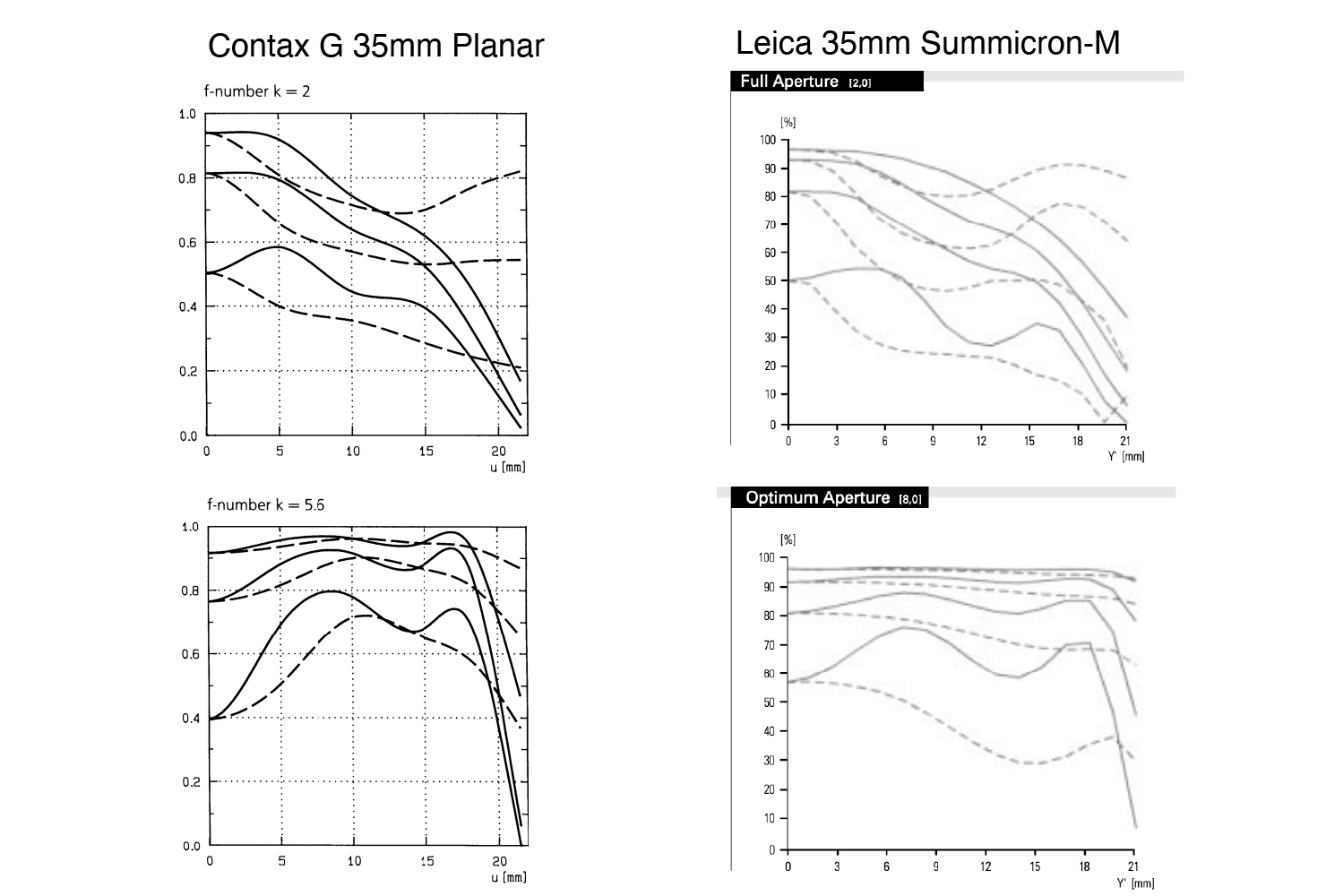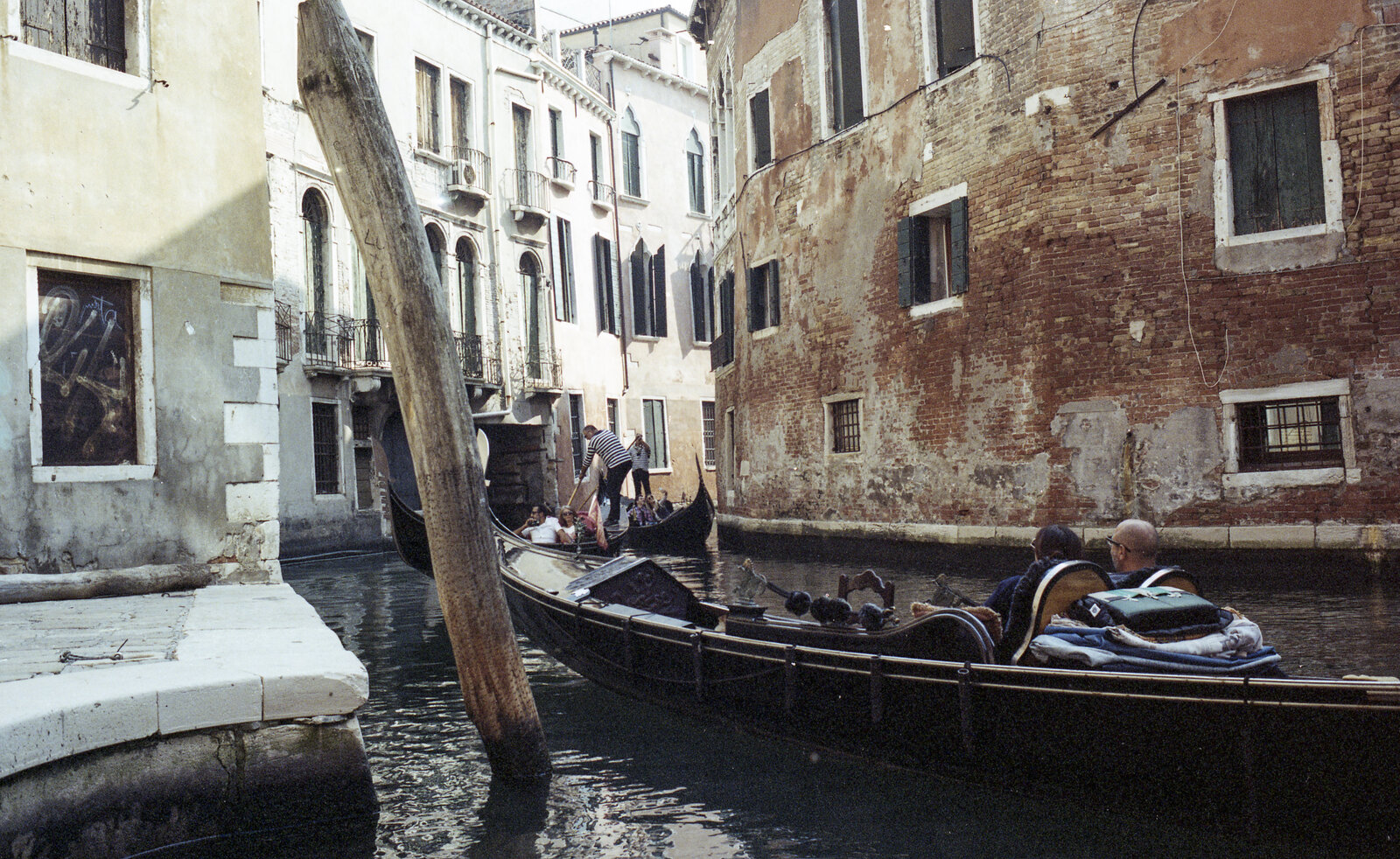TOC
The G series of rangefinder camera lenses created by Carl Zeiss in the 1990s is universally considered one of the best creations of the turn of the century, an absolute swan song for film. However, among so many lenses acclaimed by the public and critics like the 45mm Planar, there has always been a caveat. The 35mm, introduced later for the updated Contax G1 green label, was immediately judged too soft and inferior to the rest of the kit.
The bad name of the 35mm comes from the constant confrontation with its slightly older sibling. The main advantage of the 45mm was its extreme sharpness, already excellent at f2, but superlative by closing a couple of stops. Then there was also the 28mm f2.8, slightly wider, equally compact, and capable of delivering exceptionally sharp images even at full aperture. The 35mm then found itself squeezed between two excellent performers and paid the price by taking that bad reputation that still accompanies it. Is it deserved?
The 35mm looks like an extremely comfortable lens to use: compact and light, it is very elegant once mounted on the camera. It is the smallest lens in the G kit and attached on a G1 makes the camera almost fit to be kept in a pocket. Built like all the others in the G series in solid titanium, it is, first of all, a beautiful object, and that’s no small feat.
As for the much-criticized sharpness we have to be clear: the 35mm is not defined as the 45mm, but is it defined enough? For years there has been talking of unflattering MTFs, but to answer we have to compare it with the contemporary Leica 35mm Summicron, one of the German company’s even more sought-after lenses. If we compare the MTFs, we realize that both have an identical drop in sharpness at the edges at full aperture. Knowing this is very important because it allows us to use it to the fullest: we can use it at close range for portraits keeping the subject in the center, guaranteeing an excellent tridimensionality.

It is even more interesting what happens when we go to close the iris. Once the optimal aperture is reached, the two MTFs are still superimposable, with only one difference: the Zeiss reaches its definition peak at f5.6, while the Leica requires it to close one more stop. In both, it is then possible to see the drop in sharpness at 2/3 of the frame, typical of Planar schemes, a symptom of two lenses designed with the same philosophy and easily superimposed.
The comparison of MTFs may seem abstruse in itself, but it is necessary for illustrating how the bad reputation of this lens is largely undeserved. Now it is time to check why this lens is a great one. First of all, it is the tonal richness that makes an impression. Whether it’s black and white or color this lens expresses an amazing richness of mid-tones. Unlike the 45mm, where the extreme definition is accompanied by a very pronounced contrast, the 35mm is instead capable of rendering all the transitions of gray or color present in a scene. This softness, in the best sense of the term, makes it ideal for portraits.

Even from this small self-portrait in front of a Leica store we can see the similarities in the performance with the German cousin at full aperture
It is interesting to note how this Zeiss lens presents all the qualities that we are usually used to attribute to Leitz glasses: tonal richness, three-dimensionality, and rendering of the focus. Precisely for this reason, placed on a Contax system, it did not meet the taste of its owners. On the other hand, it could have been appealing to Leica enthusiasts, but this product mounted on an electronic camera did not meet their favor. The former therefore highlighted its supposed softness, while the latter was not even interested in it.
A subsequent misfortune was then the difficulty of applying the lens to digital cameras. The absence of a focus ring forces you to buy tricky adapters and has discouraged more correct integration. The presence of a lens that covers the sensor of modern mirrorless cameras proved to be a great challenge for lenses with such a short flange distance. This feature makes the widest focal lengths (16mm, 21mm, and 28mm) almost unusable, but it also has some minor repercussions on this lens.
I was able to test this lens on a Sony A7ii with mixed results. Without a sensor modification, like this one offered by Kolari, the limitations of the lens are accentuated. There is a lot of distortion and also the sharpness at the edges is disappointing. To get good results in the corners you need to close at f5.6 or even f8. Not that there are no merits, on the contrary: the colors are unexpectedly saturated, and there is also a pleasant hint of circular bokeh. It all lies in knowing these strengths and limits and using the lens accordingly: it will be an excellent companion for portraits, while bad for landscapes and architecture.

Traffic jam in Venice, the color rendition is extremly faithful to the eye, here on Kodak Portra 400
The final verdict is therefore complex, but completely positive. Despite the many, too many, criticisms received, this lens is a little hidden gem. Spectacular in film and very good on digital in the right conditions, it has paid a bad name due to the rest of the Zeiss kit. We would talk very differently of it if it had “Leica” written on the front and an M-mount behind.
However, the general idea around it is changing: prices are rising and it is already the most expensive lens of the G system, obviously excluding the 16mm. All this is a sign of a renewed interest in a piece that has been ignored for too long and now receives the attention it deserves, as probably the only real summicron-killer.

Sharpness is not an issue, here at f2 I made a 30x40cm silver print from this negative! The 35mm focal lenght is always the perfect street-photography companion.